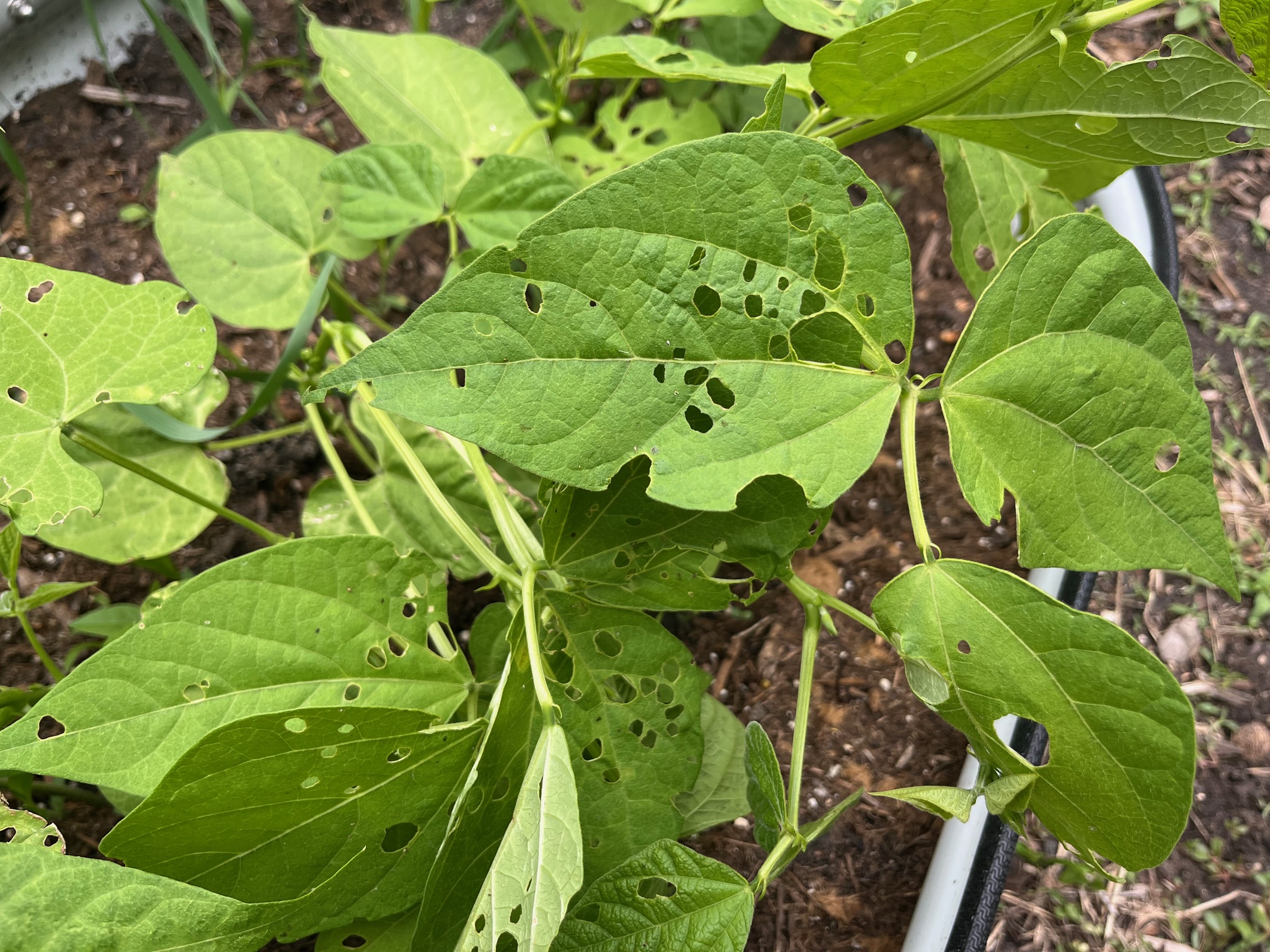Talking Plants
Jillian Patrie | University of Minnesota Yard and Garden Extension
Insects have started to appear in gardens and though some of them are bad, most of them are beneficial and help control other unwanted insects. Pest damage is normal on all plants, but the severity of the damage should determine whether treatment is necessary. Let’s look a bit closer at pest management and what methods can be utilized if action is needed.
Integrated pest management is the term used to describe a holistic approach to insect control in gardens, landscapes and other managed areas. There are several steps in the best management practices toolbox for approaching pest issues. The first step is the most important and that is identifying the pest correctly and understanding its biology. Correctly identifying the pest will determine whether it is beneficial or an actual pest. Knowling the insect biology will allow a better understanding of how the identified pest can be controlled.
Many pests can only be effectively controlled in specific life stages, such as larva, adults or eggs. Some insects are only pests at specific life stages as well, which can also determine best management practices.
There are several control methods practices don’t involve insecticides. Cultural controls can consist of cleaning up weeds and other host plants of the unwanted pest. Planting a crop earlier or later to avoid time periods when pest population numbers a highest. One example of a cultural control is pulling nightshade out of garden spaces; nightshade is a favorite with Colorado potato beetle. Other cultural control techniques include crop rotation, switching crop locations or crop varieties can also help manage pest populations.
Physical control methods are another strategy and require more hands-on work in the garden. Removing eggs and adults by hand is a recommended method for controlling Colorado potato beetle. Other physical controls can be placing cloth or netting over cabbage to exclude cabbage loopers from feeding on plants.
If these above methods do not work for your situation there are several biological controls that can be applied or naturally exist. Beneficial bacteria such as Bacillus thuringiensis is a commonly used natural pesticide used for caterpillar control. There are many beneficial insects that control a wide variety of pests too and are present naturally. Ladybug larvae and adults can consume up to 60 aphids a day! Parasitoid wasps are efficient at controlling caterpillars, aphids and many more garden pests.
When all else fails, pesticide may be the only option and should only be used if damage is severe enough that there will be significant crop loss. Pesticides should only target the pest that needs to be controlled, broadly used pesticides can negatively affect beneficial insects and can in some cases make the issue worse. Understanding what time of year and stage the unwanted pest is best controlled is also important. This information will allow for the most effective use of pesticide and reduce the number of times it needs to be applied.
For more information on the best pest management practices visit https://extension.umn.edu/how/preventing-pests-your-yard-and-garden.
For questions about this article or for local assistance please contact Clay County Extension Educator, Jill Patrie at 218-299-7338 or by email at patri350@umn.edu.


